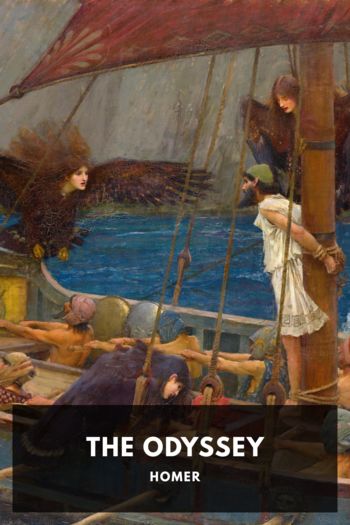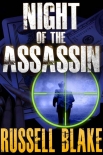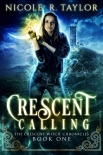The Cutthroat Clive Cussler (summer books txt) 📖

- Author: Clive Cussler
Book online «The Cutthroat Clive Cussler (summer books txt) 📖». Author Clive Cussler
Marion had just gotten in herself, having worked late directing a two-reel comedy at the Biograph Studios. Her straw-blond hair was still pinned up high on her head so it didn’t get in the way when she looked through the camera. The effect was majestic, revealing her graceful neck and setting off her beautiful face like a golden crown.
They agreed each was starving and met in the kitchen. Bell mixed Manhattan cocktails, sliced bread and toasted it on the gas range, while Marion melted cheddar cheese with ale, Worcestershire, mustard, and an egg for a Welsh rarebit.
She was a well-educated woman, with a Stanford University law degree, and with experience in business, before she began making moving pictures. Bell often relied on her incisive mind to talk out thorny cases, as she had unusual powers of observation and a way of approaching problems from unexpected angles.
“What about the girl in Boston?” she asked when he had filled her in on the grisly Mohawk River discovery.
“Lillian. The prostitute.”
“You’re sure your murderer didn’t kill her, too?”
“Dashwood looked her over at the morgue. She was not cut.”
“None of those strange crescents?”
“Not a mark on her.”
“Only strangled? . . . Was her neck broken?”
“Yes.”
“Do I recall correctly that Anna’s neck was broken, too?”
“Yes.”
“And am I right in assuming that both girls’ necks were broken ‘accidentally’?”
“So to speak. Both were small girls, and he would appear to be very strong. The bruises on their throats indicated that he meant to strangle them. There are better ways to break a neck, if that’s your intent.”
Marion pondered that silently, and they went on to discuss other things, including the fact that Helen Mills had discovered nothing about any boyfriend in Anna’s diary; that Anna, Mary Beth, and Lillian shared a similar petite build and hair coloring; and the mysterious crescent-shaped symbols carved on Anna’s and Mary Beth Winthrop’s bodies.
Later, when his wife had changed into a silk peignoir that matched her green eyes, and Bell was watching with growing interest as she let loose her hair, Marion suddenly said, “But . . .”
“What?”
“But what if the murderer was interrupted just after he strangled Lillian? What if someone came along before he could . . . do what he wanted with his knife?”
“Then we would have three murders in a row,” Bell answered soberly. “And be one closer to counting how many.”
“How many victims he has already killed?”
“Exactly.”
“How will you do that?”
“I’ve got to figure out how to get Mr. Van Dorn to gather our forces.”
“What will it take to convince him?”
“More evidence.”
11
Isaac Bell banged a perfunctory knock on Joseph Van Dorn’s door and shouldered through it. The Boss glanced up from his desk, took one look at his Chief Investigator’s expression, and spoke into his candlestick telephone. “I will call you back later.” He hooked the earpiece, and asked testily, “What’s on your mind, Isaac?”
“I’m ready to broadcast an All Field Offices Alert.”
Van Dorn shook his head. “Field Offices Alerts are as urgent as ‘All hands on deck’ in a hurricane. But ordering every operator in the agency to drop everything to act on orders from the top is disruptive—even excusing those engaged in gunplay. That is why we seldom issue them, and then only for the most pressing matter.”
“We have evidence of three similar murders of young girls in three separate cities,” said Bell. “I’m not waiting for a fourth.”
“Two possibly similar murders,” Van Dorn shot back. “And one unlikely link in Boston. I said last week, Isaac, and I’ll say it again, it’s a police case. Let the police handle it.”
“It’s gone beyond the cops.”
“Why?”
“Three murders in three cities,” Bell repeated. “Local cops rarely talk to local cops in the next precinct, much less neighboring cities. And never across state lines.”
“What are you driving at?”
Bell replied to Van Dorn’s question with a question of his own: “How do you get us federal government contracts?”
“By spending ridiculous amounts of time buttering up government officials in Washington while the rest of you have a fine time being private detectives.”
“Those officials are buying something priceless from you. Priceless and unique.”
“What is that, may I ask?”
“The Van Dorn Detective Agency’s broad overview from our field offices all across the country. Cops don’t have that overview. Without it, they can’t see patterns. They can’t connect related crimes. They can’t fit pieces of a puzzle together. They don’t have the pieces.”
“The Justice Department’s—”
“No, sir,” Bell interrupted. “At this moment, there are only two types of national forces that can put the pieces together—newspapers linked by national wire services and private detective agencies with a continental reach like ours.”
“Newspapers?” Van Dorn leveled a meaty finger at the heap of cuttings that Bell had ordered sent to him from Research. “Have you seen this drivel?” He snatched up one and read aloud in a voice steeped in scorn.
“The killings of the Broadway stage actress Anna Waterbury and Springfield church choir singer Mary Beth Winthrop, whose mutilated body was found in the Mohawk River train wreck, appear to be the brutal work of a madman as methodical and cunning as Jack the Ripper.”
Van Dorn crumpled it in his fist and picked up another.
“The case looks like Jack the Ripper all over again, the murderer seemingly affected with an insane mania to mutilate bodies as had the notorious Whitechapel Fiend.”
He threw it down and read from a third.
“The detectives seek a woman hater of the Jack the Ripper type.”
“Natives tom-tomming in the jungle make more sense than journalists.”
“That is precisely why I wanted you to read them,” said Isaac. “The newspapermen are often on the scene. But they report little more than what the cops tell them. While the cops don’t know what’s going on next door. That leaves only the Van Dorn Detective Agency to collect





Comments (0)